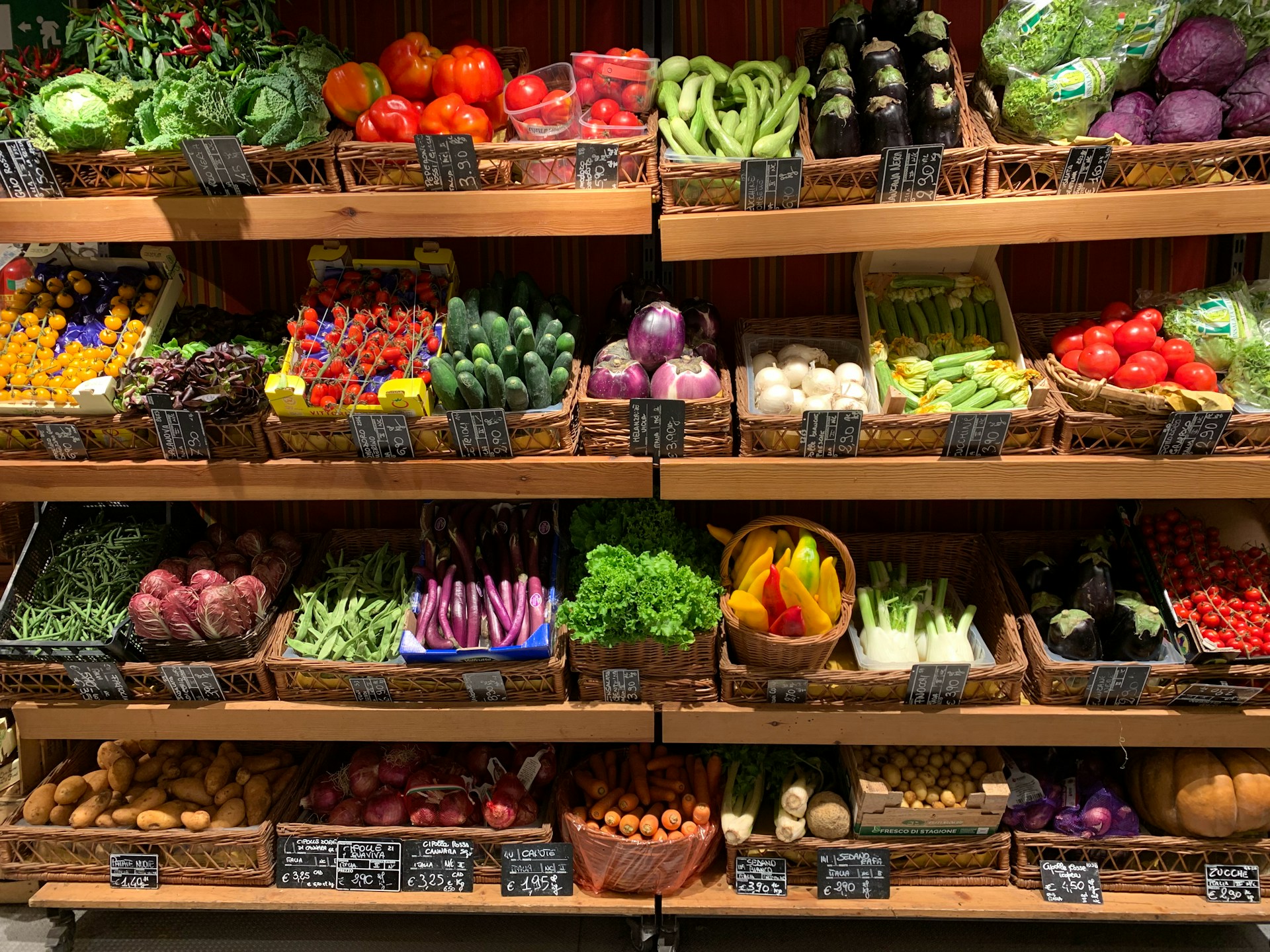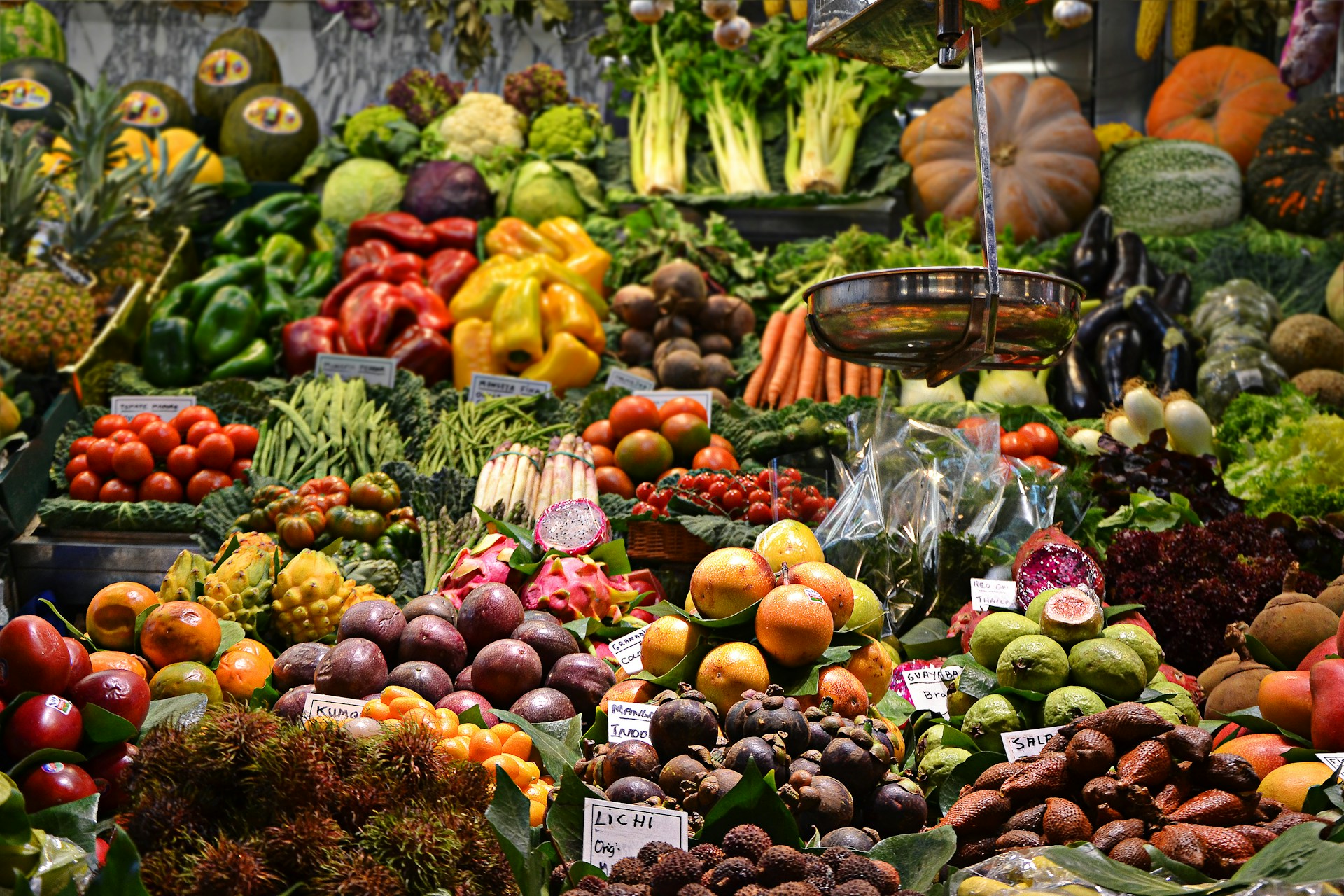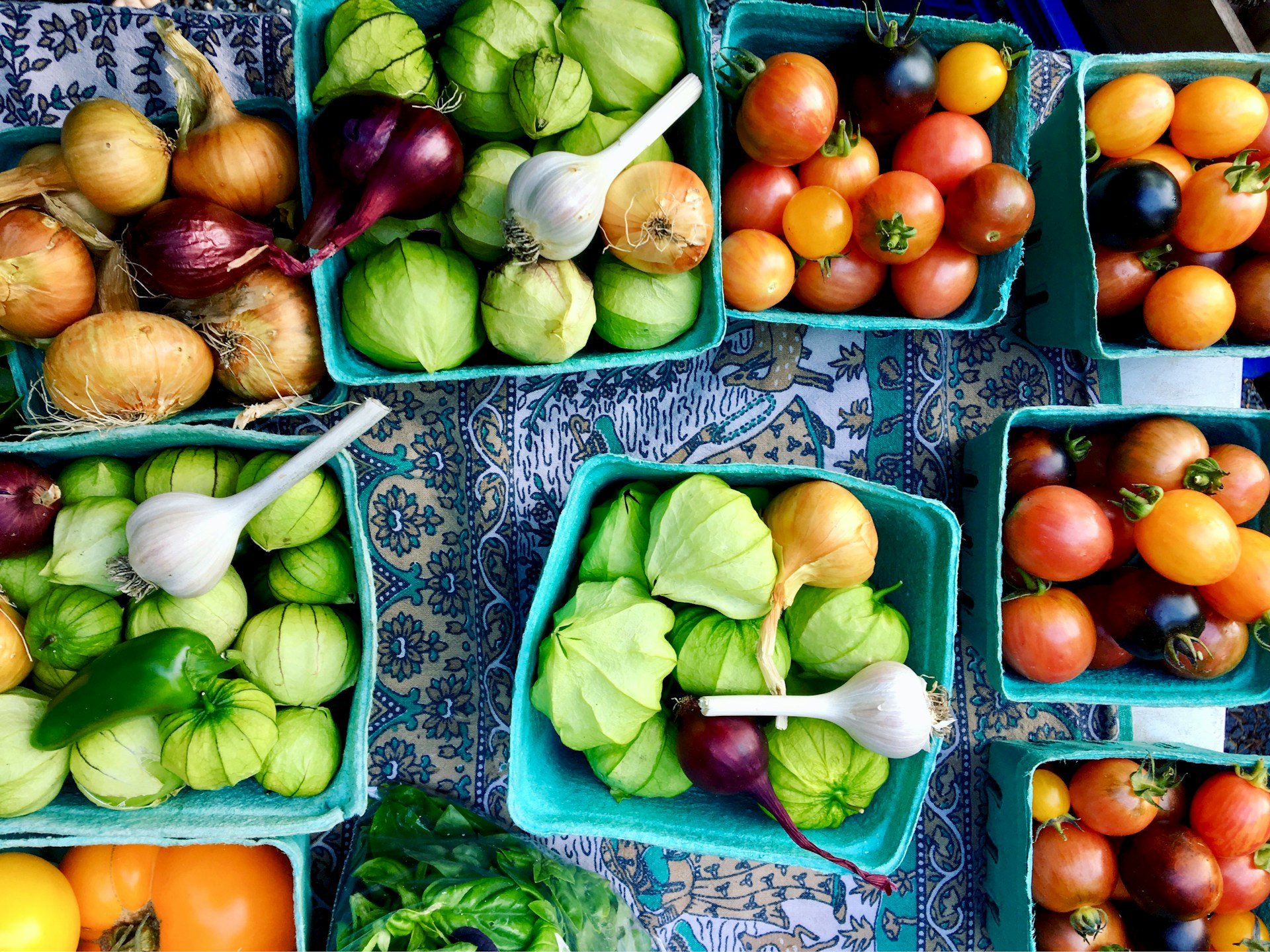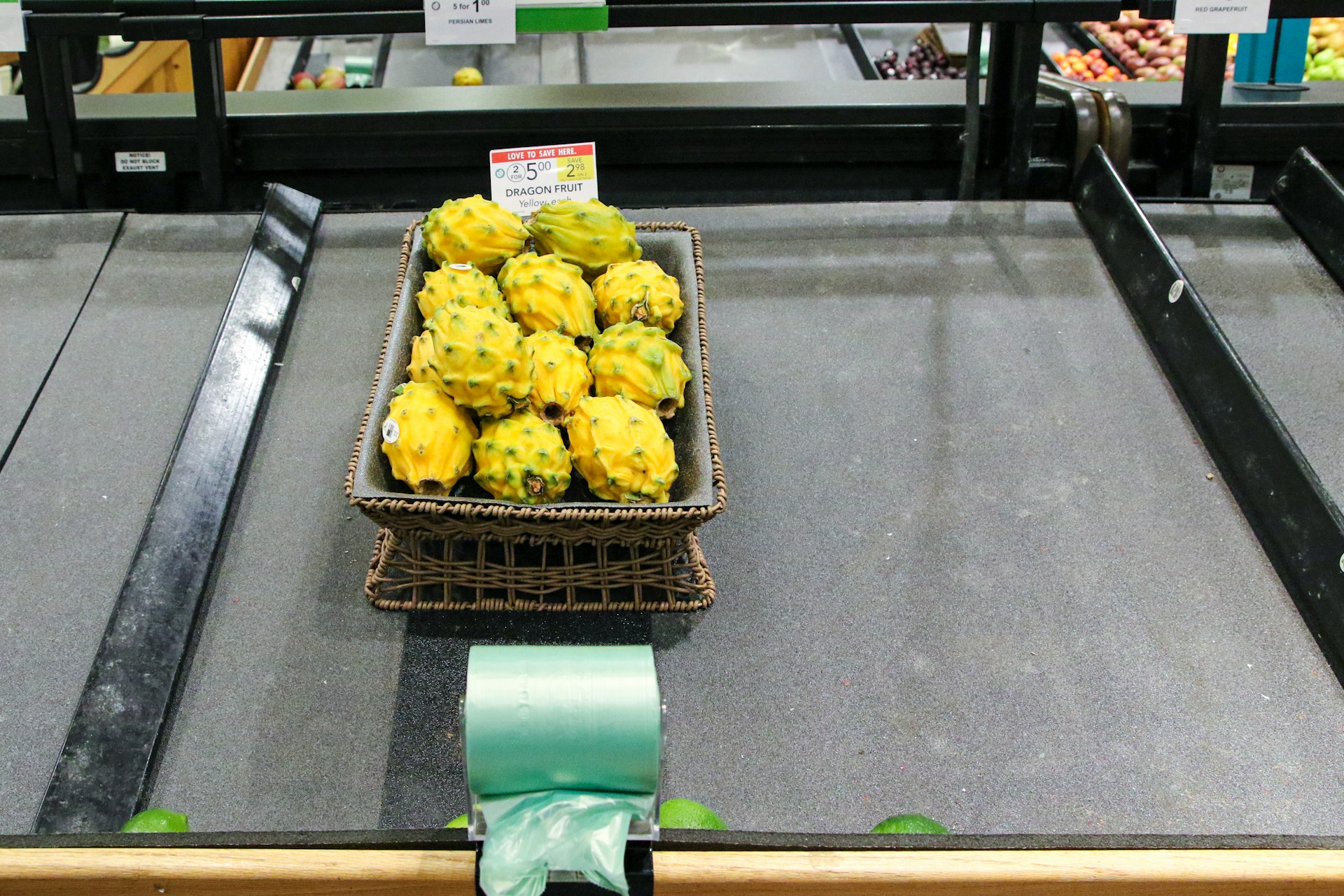In a world where consumers are increasingly conscious about food waste and sustainability, retailers need to find innovative ways to extend the lifespan of their fresh produce.
The management of shelf life plays a pivotal role in minimizing food wastage and maximizing profitability.
From proper storage techniques to strategic floor planning, several measures can be implemented.
Throughout this article, we aim to delve into various strategies that prove instrumental in boosting products’ longevity.
We will also explore how these strategies can positively impact business performance in the long run.
Balancing food safety, consumer demand, and operational costs effectively is indeed a challenge, but with the right approach, it can transform the retail experience.
Contents
- Strategies To Extend Produce Shelf Life In Retail
- 1. Regularly Monitoring and Adjusting Temperature Controls
- 2. Ensuring Consistent and Optimal Humidity Levels
- 3. Regular sanitation of storage and display areas
- 4. Implementing strategic produce rotation techniques
- 5. Usage of Ethylene Absorbers and Filters
- 6. Utilising specialised produce packaging solutions
- 7. Adhering to Safe Food Handling Practices
- 8. Proper Lighting to Slow Down Ripening
- 9. Segregating Produce Based on Ripening Stages
- 10. Stock Control to Avoid Overcrowding
- The Bottom Line
Strategies To Extend Produce Shelf Life In Retail
1. Regularly Monitoring and Adjusting Temperature Controls
The process of extending the shelf life of produce in retail is a delicate and complex task, with a myriad of variables which need to be appropriately managed.
Temperature control is arguably the most crucial aspect of this process, given its profound impact on the rate of ripening and eventual decay of the produce.
Produce, like other organic materials, go through a respiration process that releases heat – a process that accelerates as the temperature rises.
As such, monitoring and adjusting temperature controls to optimal levels in line with the specific requirements of different produce is an effective strategy in prolonging their shelf life.
For instance, some fruits and vegetables such as bananas, tomatoes, and avocados need a warm temperature to ripen but once ripened, need a cooler temperature to sustain their freshness.
Consequently, having state-of-the-art temperature control systems installed in your retail store is a non-negotiable requirement as it allows for precise temperature readings and adjustments.
Digital temperature controls, for instance, provide real-time temperature data and prompt alerts when the temperature veers off the optimal range.
This allows for immediate intervention – be it lowering or raising the temperature – to restore the optimal climate for the said produce.
Moreover, with advancements in technology, it’s now possible to automate the temperature control system.
Automated control systems not only help in maintaining optimal temperatures but also reduce the margin of human error, thus ensuring the produce does not suffer from sudden temperature drops or increases.
Regular checks on the systems are also essential to ensure they are working correctly and reflecting the true temperature conditions within the storage or display areas.
This would involve both physical inspections of the equipment as well as monitoring the digital readouts for consistency and accuracy.
If any inconsistencies are noted, it’s imperative that they are corrected swiftly to prevent any potential damage to the produce.
Changing seasons and fluctuations in weather patterns can also affect the temperature in storage and display areas.
Therefore, it is essential to adjust the temperature controls accordingly to compensate for the variations and ensure the produce remains in the optimal environment for their specific needs.
By employing these practices, you can significantly extend the shelf life of the produce in your retail store, ensuring fresh and quality products for your customers while reducing waste.
2. Ensuring Consistent and Optimal Humidity Levels
Maintaining the right humidity levels is a pivotal aspect in extending the shelf life of produce in a retail scenario.
Just as temperature, humidity plays a substantial role in keeping produce fresh and appealing to consumers.
Most fruits, vegetables, and other perishables require high humidity levels, often between 80 to 95% in order to keep their moisture content and remain hydrated.
For example, leafy greens and herbs thrive in >95% humidity since they lose water quickly and need a humid environment to slow down the dehydration process.
In contrast, lower humidity levels are apt for storage of onions, garlic and certain types of squash.
In an ideal retail setup, each produce section would have a specified humidity level according to the needs of the particular produce being displayed or stored there.
Avoiding humidity fluctuations is important; sudden drops or rises in humidity can lead to condensation and quicker spoilage.
The use of modern refrigeration systems with humidity controls can help achieve this consistency.
These systems can maintain a stable humidity level, thereby prolonging the freshness and vitality of the produce.
Apart from this, regular checks and adjustments can ensure that optimal humidity levels are maintained.
If the humidity is too low, produce may wilt or shrivel, but if it’s too high, it can encourage the growth of mold and other pathogens.
Manual interventions such as misting systems can also be utilized to maintain high humidity levels, especially for herbs and leafy greens that are prone to quick wilting.
But, care must be taken not to overuse these systems as excess water can lead to rot.
Another supplementary technique could involve using humidity-controlled drawers and storage containers.
These offer a convenient way to segregate fruits and vegetables according to their individual humidity needs.
Ultimately, constant monitoring and adjustments can go a long way in ensuring consistent and optimal humidity levels, enhancing both the quality and shelf life of retail produce.
3. Regular sanitation of storage and display areas
One profound strategy to lengthen produce shelf life in a retail setting hinges upon the routine cleansing of storage and exposition spots.
This is because pathogens and harmful bacteria, which are potent accelerators for produce rot and spoilage, often flourish in unclean places.
Consequently, adhering to swift and recurring sanitation procedures can assist in restricting their growth and keeping the fruits and vegetables fresh for more extended periods.
Therefore, the regular disinfection and sanitisation of storage and display areas form a crucial element in the preservation of the freshness and shelf life of produce.
This practice can be executed by using approved cleaning solutions that can wipe out harmful microbes without leaving residue that could harm the produce.
Moreover, in addition to the thorough mopping, sweeping, dusting, and wiping down of the storage and display areas, even the handles, knobs, and surfaces touched often by customers must be taken into account in the cleaning process.
It’s significant to monitor and clean spillages promptly as they can rapidly become hot spots for bacteria and other spoilage accelerators.
Mopping and cleaning spillages as soon as they occur reduces the risk of cross-contamination that often speeds up the degradation process of produce.
Furthermore, an unnoticed or ignored spillage can also result in slip and fall hazards, therefore prompt cleaning is crucial for multiple reasons.
The cleaning of produce display units in retail settings is as important as the sanitisation of the storage areas constantly.
This is because they hold enormous quantities of stock and are frequently accessed by customers, each with a varying degree of cleanliness.
Thus, it becomes highly essential that consistent sanitation of the display units isn’t overlooked when considering strategies for extending product shelf-life.
Similarly, dropping and breaking produce not only amounts to loss but can also spread unwanted bacteria causing more spoilage, hence handling produce carefully also factors into maintaining hygiene in storage and display areas.
In conclusion, both the areas- storage and display, are important aspects of a store and sanitation of both the areas is crucial for enhancing the shelf-life of the product, this can be achieved using strategic cleaning patterns and appropriate cleaning products that do not affect the produce.
4. Implementing strategic produce rotation techniques
The concept of produce rotation is an essential technique for a retail store aiming to extend the shelf-life of its produce.
At its core, this strategy revolves around the principle of ‘First In, First Out‘ (FIFO).
FIFO, as a principle, ensures that the oldest stock (the stock that came in first) is sold before the newest stock (that came in later).
With this principle in play, the chances of any produce sitting on the shelves for too long and going bad are significantly reduced.
Ambiguous labelling that creates confusion and thus leads to stall outs in the rotation process, should be strictly avoided.
Implementing a consistent and easily understandable labeling system is a way to make sure all staff members are on the same page and can follow the rotation procedures efficiently.
Labels should ideally include the date of the produce’s arrival at the store. This will help employees know at a glance which items need to be sold first.
Whilst implementing any rotation strategy, it’s important to remember that different types of produce have differing lifespan.
For example, fruits like bananas and tomatoes ripen much faster than others like apples and oranges; thus, they should be given priority in the rotation schedule.
Maintaining separate rotation schedules for different types of produce can minimise waste and optimise shelf-life
.Proper training of staff members is also a critical part of implementing an effective produce rotation strategy.
Staff members should be trained to understand the intricacies of produce rotation, including the FIFO technique, the importance of proper labelling, and the varying shelf-lives of different types of produce.
Staff members who are aware and trained properly can contribute massively to reducing waste and increasing produce shelf-life
.Additionally, the strategic implementation of produce rotation can positively influence the customer’s perception of your store’s freshness and food safety procedures.
Seeing older, over-ripened or spoiling produce can deter customers and harm your store’s reputation. Conversely, a steady rotation of fresh produce can reassure customers of the quality and safety of the food they are buying.
Implementing strategic produce rotation techniques is, therefore, a crucial strategy for extending the shelf life of produce in a retail environment.
5. Usage of Ethylene Absorbers and Filters
One of the most effective strategies to extend the shelf life of produce in retail is the usage of ethylene absorbers and filters.
These devices are specifically designed to absorb the ethylene gas that is naturally released by fruits and vegetables as they ripen.
High concentrations of ethylene gas will cause produce to ripen rapidly and deteriorate quickly, reducing its shelf life and its marketability.
By absorbing this gas, ethylene absorbers and filters can significantly slow down the ripening process, thus extending the shelf life of the produce.
Many retail stores are integrating these devices in their storage and display areas to maintain their freshness and visual appeal.
The usage of ethylene absorbers and filter is even more crucial when dealing with products that are highly sensitive to ethylene such as apples, bananas, and tomatoes.
There are many types of these devices available on the market, from individual sachets that can be placed directly in boxes with fruits or vegetables to absorb the ethylene, to filters that can be added to a store’s air conditioning or refrigeration system.
Some of these devices are even designed to be environmentally friendly, using natural minerals to absorb the ethylene and reusable filters that can be easily replaced.
Another advantage of using ethylene absorbers and filters is that by reducing the speed at which the produce ripens and deteriorates, they also reduce the risk of fungal and bacterial growth, which could also compromise the safety and quality of the produce.
The decision to use an ethylene absorber or filter will depend on several factors, including the type of produce being stored, the size of the storage area, and the budget of the store.
Despite the initial cost, these devices often represent a long-term investment since they help to reduce waste and the associated costs.
The usage of ethylene absorbers and filters is thus a strategic choice that can have significant benefits for retail stores seeking to extend the shelf life of their produce.
However, it is important for these stores to also implement other shelf-life extending strategies, such as those outlined above, to guarantee the freshness and quality of their produce at all times.
These strategies, combined with the usage of ethylene absorbers and filters, offer a comprehensive approach to maintaining the quality and extend the shelf life of produce in the retail setting.
Even though the importance of correct usage and maintenance of these devices should not be underestimated, as they are not effective if not used properly.
6. Utilising specialised produce packaging solutions
One approach that helps preserve the freshness of produce for longer periods in retail settings is the use of specialised packaging solutions.
These solutions aim to create an optimal environment for the produce, reducing the pace of their natural maturing process.
While the specifics of these packaging solutions will vary depending on the produce in question, a few key principles should always guide their design.
In essence, the packaging should restrict the amount of oxygen that can reach the produce, slowing down the ripening process and preventing premature spoilage.
Furthermore, they should also be able to absorb the ethylene gas that many fruits and vegetables naturally emit, as this gas can significantly speed up the ripening process, shortening their shelf life.
In addition, these specialised packages are produced using materials that have antimicrobial properties, further helping to prevent the growth of bacteria and other microorganisms, which could cause the produce to spoil.
Some of these specialised solutions also include features that maintain optimal humidity levels inside the package, which can be critical for certain produce like leafy greens or herbs.
Furthermore, the package should be robust enough to protect the produce from physical damage, especially during transportation and handling.
However, while using these specialised packaging solutions is a key strategy to extend the shelf life of produce in retail, it should also be kept in mind that they should be sustainable and eco-friendly.
Over-reliance on conventional plastic packaging solutions can lead to significant environmental issues.
Therefore, retailers should seek out packaging solutions that are both effective in prolonging the shelf life of the produce and environmentally responsible.
Some solutions to this effect are emerging in the form of biodegradable and compostable packaging materials.
In conclusion, employing specialised packaging solutions represents a critically important strategy for prolonging the shelf life of produce in retail.
While they add to the upfront cost, their benefits in terms of reducing spoilage and waste, enhancing customer satisfaction, and contributing to environmental sustainability clearly make them an investment worth considering.
7. Adhering to Safe Food Handling Practices
The practice of safe food handling is paramount in extending the shelf life of produce in the retail sector.
Not only does it mitigate the chances of foodborne illnesses, but it also ensures the freshness and longevity of fruits and vegetables.
This involves everything from carefully washing the produce to minimize the risk of bacterial contamination, to storing produce at the correct temperatures.
Fundamentally, it’s about treating the produce with care and respect to achieve optimal shelf life.
One of the first safe food handling practices is ensuring that hands and surfaces are cleaned and sanitized regularly.
Surfaces that have not been properly cleaned can harbor bacteria, which can significantly decrease the shelf life of produce and potentially compromise its safety.
Hence, regular and thorough cleaning of all surfaces coming into contact with produce is of paramount importance.
Also, employees should be educated about the importance of personal hygiene.
Another critical food handling practice that must be practiced is the separation of fruits and vegetables.
Intermixing different kinds of produce can lead to quicker spoilage due to the different enzymes and gases that various fruits and vegetables emit.
Moreover, retailers should be mindful not to damage the produce during handling.
Handling produce with care prevents bruising which speeds up the ripening process and in turn affects its shelf life negatively.
All produce must be checked regularly for any signs of spoilage and immediately removed if found.
This helps to prevent the spread of bacteria and diseases that might inflict other healthy produce.
Lastly, it’s imperative to adhere to regulations set out by food safety agencies which have been put in place to protect both the consumer and the retailer.
Safe food handling is not just a precautionary step, but an absolute necessity in extending the shelf life of produce in the retail environment.
8. Proper Lighting to Slow Down Ripening
Beneath the surface of the obvious, lighting plays an indispensable role in managing the shelf life of produce in retail.
Not many are aware that the type and intensity of light can significantly affect the ripening process of fruits and vegetables.
This is because the light absorbed by the produce can alter their biochemical activity due to the energy it imparts.
The ideal lighting conditions can serve as a strategic tool in delaying the ripening of fruits and vegetables, thereby enhancing their shelf life in the retail setting.
It is important to understand that different categories of produce respond differently to light exposure, and, therefore, customising lighting conditions according to the produce type is vital.
For instance, studies have shown that leafy vegetables prefer a cool white light to maintain their freshness and nutritional value.
On the other hand, some fruits require dim illumination or no light at all to avoid premature ripening and degradation.
By managing the intensity, duration, and type of light, retailers can control the rate at which the produce ripens and hence prolongs their shelf life.
Using LED lights is one great way to achieve this, as they offer controllable intensities and can be optimised to suit different types of produce.
Besides, LED lights generate less heat, which further aids in maintaining the right temperature in the storage area.
Another incredible benefit of using these lights is their energy efficiency, which could lead to significant cost savings for retailers.
While harnessing the power of lighting, it is still crucial to maintain the quality of the produce, and hence attention should also be given to other factors, such as temperature, humidity, sanitation, and stocking.
Regularly monitoring and adjusting these conditions along with the lighting will contribute greatly to extending the shelf life of the produce.
In essence, proper lighting management is an effective, yet often overlooked strategy that can help retailers maintain the freshness and quality of their produce while reducing unnecessary waste.
Given the potential of proper lighting in extending the produce shelf life, this strategy certainly deserves more attention in the retail industry.
9. Segregating Produce Based on Ripening Stages
One of the effective strategies to extend produce shelf life in retail settings is segregating produce based on ripening stages.
This method is crucial as different fruits and vegetables have various ripening speeds.
Combining produce with different ripening stages can lead to the premature ripening or even rotting of some fruits or vegetables.
Proper segregation according to ripening stages helps in maintaining the freshness and extending the shelf life of each item.
This practice not only adds to the visual appeal of your merchandise but also reduces wastage and enhances customer satisfaction.
Bananas, apples, and tomatoes produce a natural gas called ethylene which speeds up the ripening process of other fruits and vegetables.
Keeping such produce away from slower-ripening items can significantly extend their shelf life.
For example, storing apples with potatoes can cause the potatoes to sprout quicker, while bananas should not be kept with most fruits as their ethylene production can lead to premature ripening.
While segregating, it’s also important to keep the temperature and humidity requirements of each item in mind.
Different fruits and vegetables require different storage conditions and hence, must be segregated accordingly.
Establishing a rotation system alongside segregation can also be beneficial. In a rotation system, newer produce is placed behind the older ones.
This encourages customers to buy the older stock first which in turn reduces store waste and maximises freshness.
Produce that’s on the verge of being overripe can be used in deli items, squeezed for fresh juice or featured in special sales to prevent wastage and earn profits.
Implementing an effective segregation strategy requires a proper understanding of each fruit and vegetable’s unique ripening characteristics.
Training staff on these characteristics and the importance of produce segregation can translate into longer-lasting, fresher produce for customers and reduced food waste and increased profits for the retailer.
Thus, through a comprehensive strategy of segregating produce based on ripening stages, retailers can achieve extended produce shelf life.
10. Stock Control to Avoid Overcrowding
One of the most significant strategies to extend the shelf life of produce in a retail environment is to maintain proper stock control to prevent overcrowding.
Overcrowding of fruits and vegetables can lead to accelerated ripening and decay, due to the increased production of ethylene gas and increased susceptibility to damage and disease.
Implementing a good stock control management system can significantly help in this area.
With proper stock control, retailers can ensure that each product has enough space to breathe, which slows down the ripening process and extends its shelf life.
The retailers could use a combination of First In, First Out (FIFO) and Last In, First Out (LIFO) methods to manage their inventory, which ensures that older stock gets sold first and newer stock stays fresh longer.
Inventory should be regularly audited to ensure that stock levels are maintained and any produce that is starting to go bad is removed promptly.
While managing stock, it’s also important to keep in mind that different fruits and vegetables require different handling and storage methods.
Stock control is not just about maintaining the right quantity, but also about managing the quality of produce on the shelves.
Retailers need to ensure that only the highest quality produce is on display, as customers often make judgments about the entire store based on the quality of its fruits and vegetables.
Another aspect of managing stock is having a diverse range of produce, which ensures that customers have a variety of choices.
Dealing with stock shipments as quickly as possible and getting produce out onto the shop floor in a timely manner also helps to extend shelf life.
However, care should be taken not to rush this process as proper inspection and cleaning of incoming shipments is crucial to maintain the quality and longevity of stocked items.
If the retailer sells a large amount of a particular type of produce, it might be beneficial to order that product multiple times a week to ensure it’s as fresh as possible.
In summary, proactive and strategic stock control not only extends the shelf life of produce but also contributes significantly to a positive customer experience.
The Bottom Line
Maintaining the quality and longevity of fresh produce requires implementing a diverse set of strategies.
Regular monitoring and adjustment of temperature controls, consistent humidity levels, and stringent sanitation protocols help to maintain an optimal environment.
Strategic produce rotation, implementing ethylene filters, and utilising specialised packaging further extend the shelf life.
Adhering to safe food handling practices, employing adequate lighting, segregating produce according to their ripening stage, and avoiding overcrowding through efficient stock control are also vital.
By efficiently blending these myriad techniques, businesses and individuals can serve fresher, healthier, and more appealing produce while preventing wastage.




